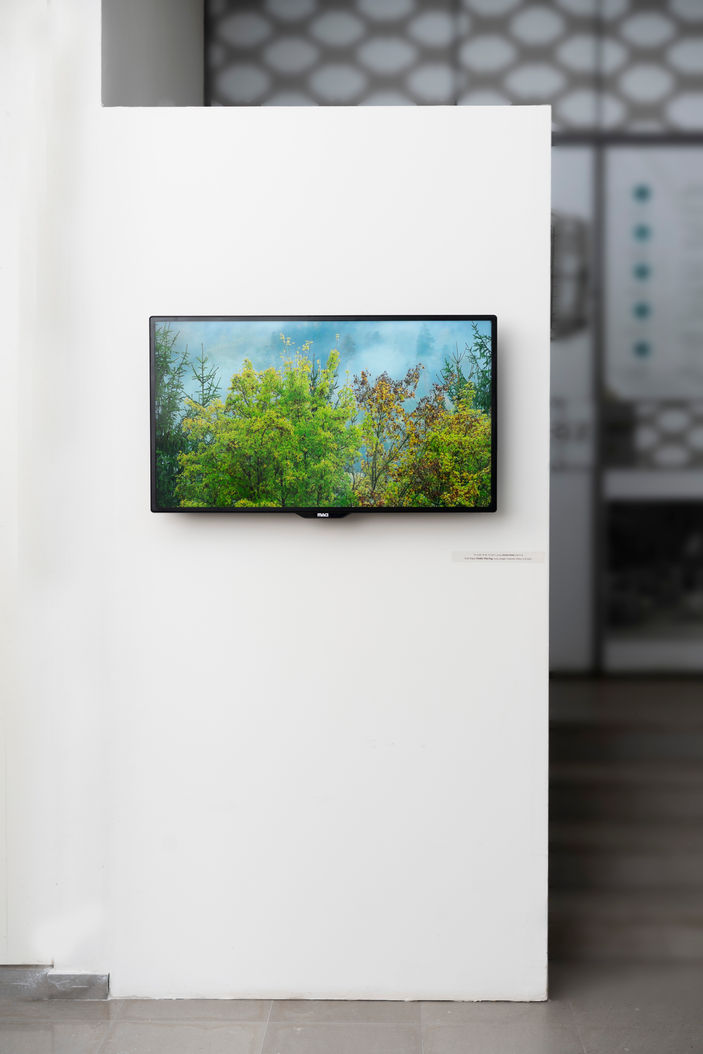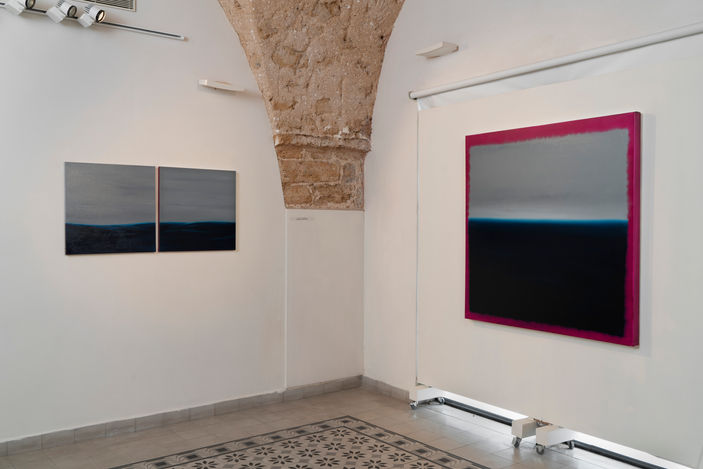LEVIATHAN
Curator:
Shira Friedman
Shown first at:
Year:
June 19 - August 15, 2020
Share:

Deep within the gallery, the artist’s figure is revealed crying out loud as he runs through a labyrinth of endless rooms, past vast pillars and puddles of murky water. A powerful echo answers his cries, confirming the artist’s solitude and his isolation from human society. The architectural labyrinth serves as a “tomb/womb,” a primeval space that allows for escape yet does not provide a respite.
Eyal Segal’s works respond to places. As he puts it, “the place calls me.” He has assimilated his body into various sites and has created a choreography of gestures, expressions, and sounds. In the video-performance “Leviathan,” the place is a subterranean water reservoir in Japan, which serves to collect floodwater; The Tomb unfolds at the site of an archaeological excavation in Jaffa; and the video work Under the Fog, which captures a poetic moment in which the sky grows brighter among the treetops, was filmed in Germany.
The tragic figure of the Prophet Jonah serves Segal as a source of inspiration, and functions as a central axis in the exhibition. Jonah’s refusal to announce the imminent destruction of Nineveh, his torment, his departure from the Jaffa port, his adventures at sea and his swallowing by a creature described as a “Leviathan” serve as a narrative thread that ties together the exhibited works, while enabling viewers to observe the gallery space as if from within “the fish’s belly” (Jonah 2, 1).

The first space functions like the exposition in a play, a first scene without actors. The sea, the fish, the treetops, and passing clouds immerse the viewers in the arena of action. In his paintings of the sea, Segal studies the material, the pigment, in its different states; this is the same material that creates the painting itself. The horizon in these paintings is frozen and closed. These are attempts to capture the memory of early, unprocessed sensations, hence the blurred frame. The fish prints continue to explore materiality and colored pigments. They represent a development of an 18 th -century Japanese printmaking technique known as Gyotaku, which involves the application of colored ink directly to the fish, and their laying on the paper to create the print. This method was used in Japan before the rise of photography when fishermen wanted to show off the impressive fish they had caught. The fish in this act become the whale in the next act.

In the biblical narrative, the Prophet Jonah’s distress is echoed by the verse: “For thou hadst cast me into the deep, in the midst of the seas; and the floods compassed me about; all thy billows and thy waves passed over me” (Jonah 2, 4). This verse also captures the sense of helplessness and loss experienced by the artist in Leviathan. The figure running about in the depths appears to be swallowed into the unconscious, repeating itself in an endless loop. The whale is an ancient cultural symbol surrounded by numerous myths, stories, and beliefs. The video work Leviathan unfolds over three days, which parallel the stages of flight, survival, and prophecy. The three days obviously call to mind the death of Jesus and the three days spent in the tomb prior to his resurrection, as well as the last chapters of Herman Melville’s masterpiece Moby Dick, published in 1851, whose subtitle is The Whale: “The Chase – First Day,” “The Chase – Second Day,” and “The Chase – Third Day.” The figure of Captain Ahab, the novel’s protagonist, who is chasing the whale, parallels that of the artist running to and from the whale’s entrails. Like Jesus and Jonah, these figures represent an existential state of human restlessness.
The resounding wail is also heard in Melville’s text: “Dragged into Stubb’s boat with blood-shot, blinded eyes, the white brine caking his wrinkles; the long tension of Ahab’s bodily strength did crack and helplessly he yielded to his body’s doom: for a time, lying all crushed in the bottom of Stubb’s boat, like one trodden under foot of herds of elephants. Far inland, nameless wails came from him, as desolate sounds from out ravines.”

.png)

_pn.png)
.png)



















